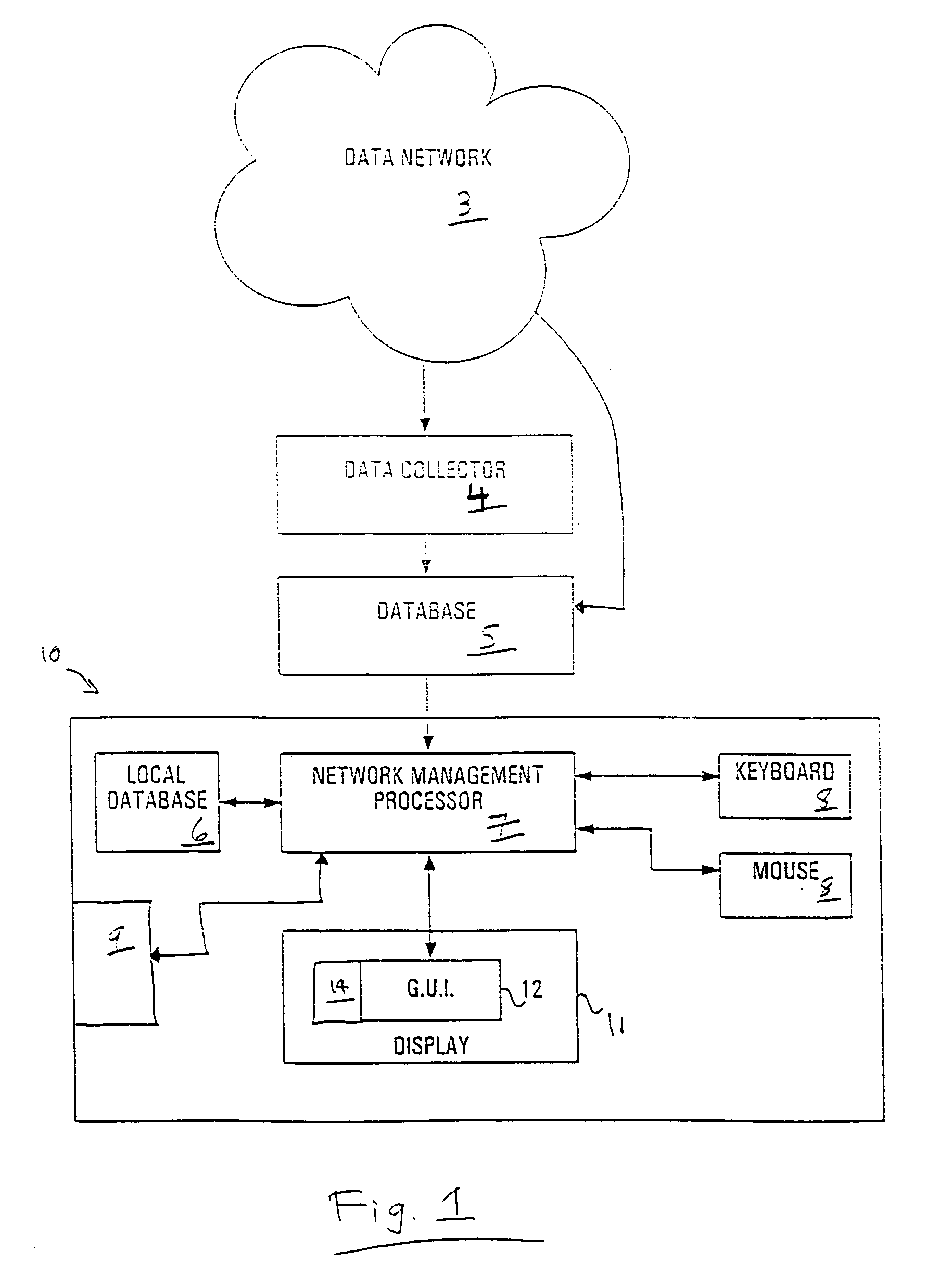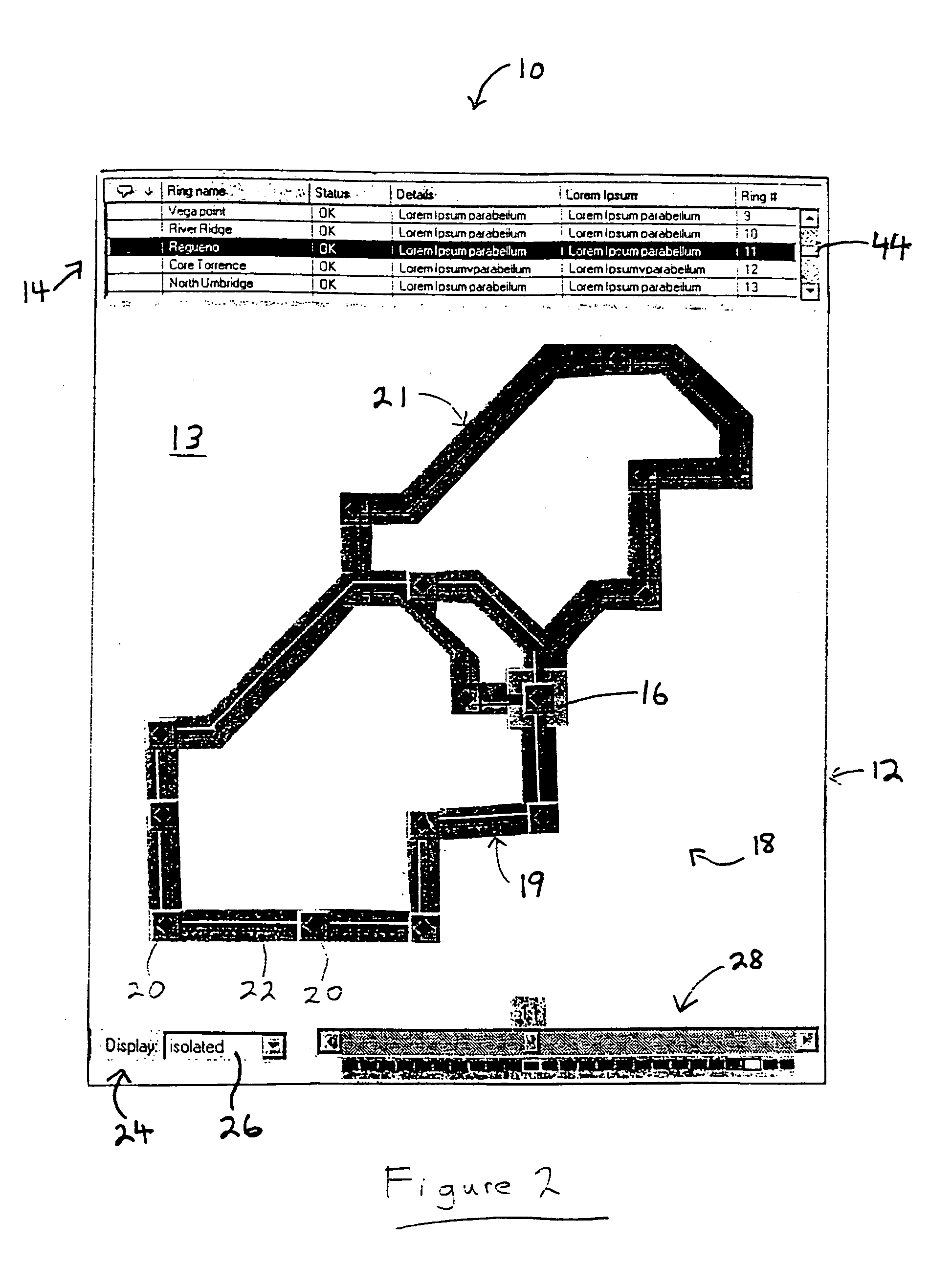Method and system for visually representing network configurations
a network configuration and network configuration technology, applied in data switching networks, instruments, digital transmission, etc., can solve the problems of hub network layout, application adaptation not being able to facilitate network managers or other users to efficiently use, and the expected increase in the complexity of network configurations
- Summary
- Abstract
- Description
- Claims
- Application Information
AI Technical Summary
Benefits of technology
Problems solved by technology
Method used
Image
Examples
Embodiment Construction
[0025]Referring to FIG. 1, a network configuration tool 10 is coupled in series with a global database 5, a data collector 4, and one or more data networks 3, such as a SONET network. The data network 3 can be a network of interconnected communication devices permitting communication of data from one point in the network 3 to another. Some examples of networks 3 include Synchronous Optical Networks (SONET), Synchronous Digital Hierarchy (SDH), Dense Wave Division Multiplexing (DWDM), a Synchronous Transfer Mode (ATM) Networks, the Internet, Networks of Microwave and Antenna Base Stations, Satellite Networks, and Networks comprising a mixture of these technologies. Regardless of the specific type, the networks 3 comprise a number of network entities or segments that each have a set of defined network features. For example, an ATM Network includes network nodes and interconnections or links that may be used for a particular customer and / or service. In other networks 3, the network ent...
PUM
 Login to View More
Login to View More Abstract
Description
Claims
Application Information
 Login to View More
Login to View More - R&D
- Intellectual Property
- Life Sciences
- Materials
- Tech Scout
- Unparalleled Data Quality
- Higher Quality Content
- 60% Fewer Hallucinations
Browse by: Latest US Patents, China's latest patents, Technical Efficacy Thesaurus, Application Domain, Technology Topic, Popular Technical Reports.
© 2025 PatSnap. All rights reserved.Legal|Privacy policy|Modern Slavery Act Transparency Statement|Sitemap|About US| Contact US: help@patsnap.com



